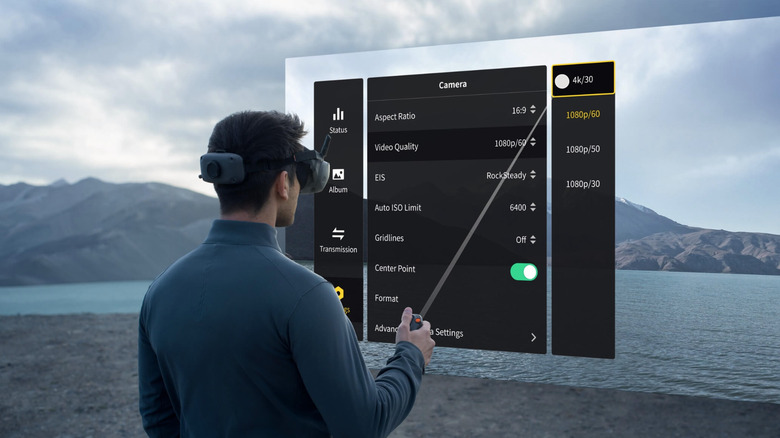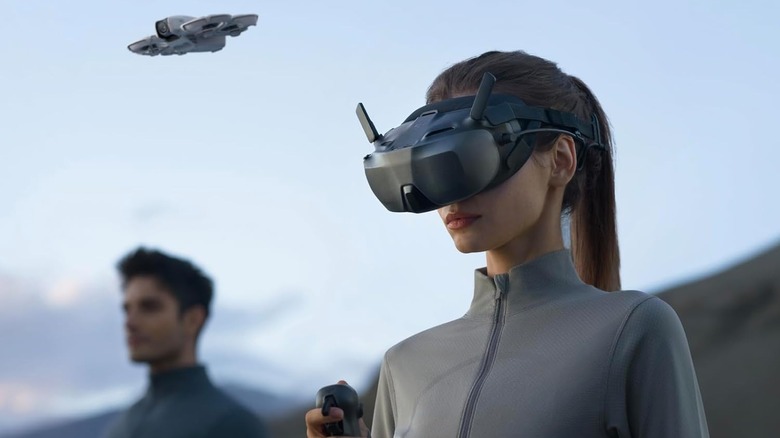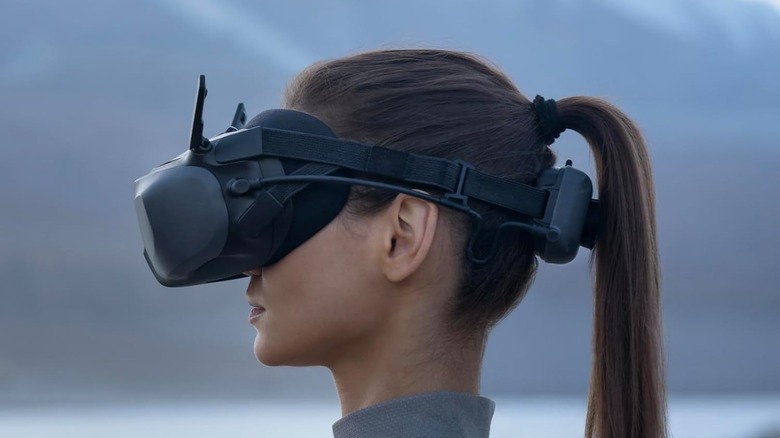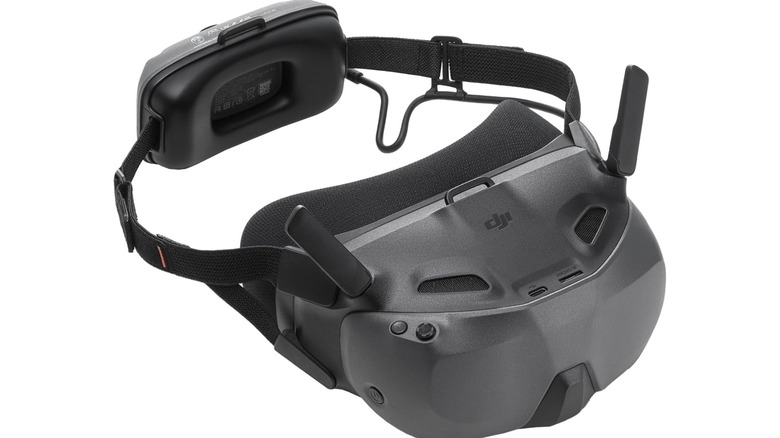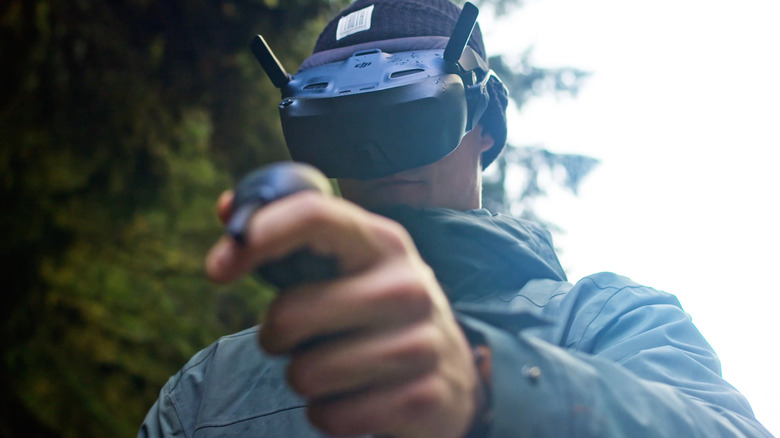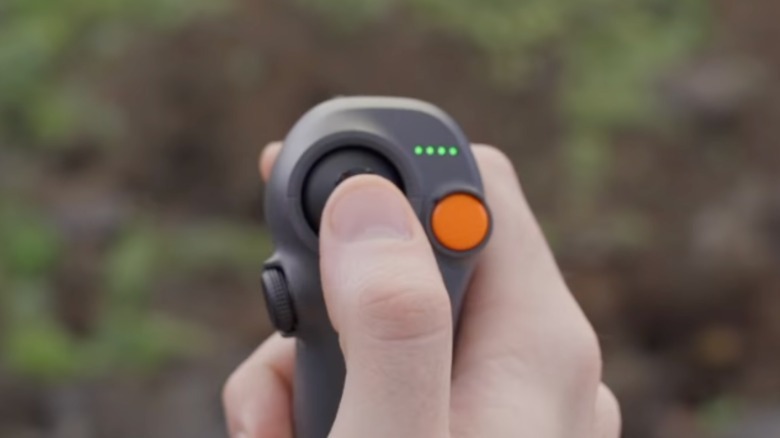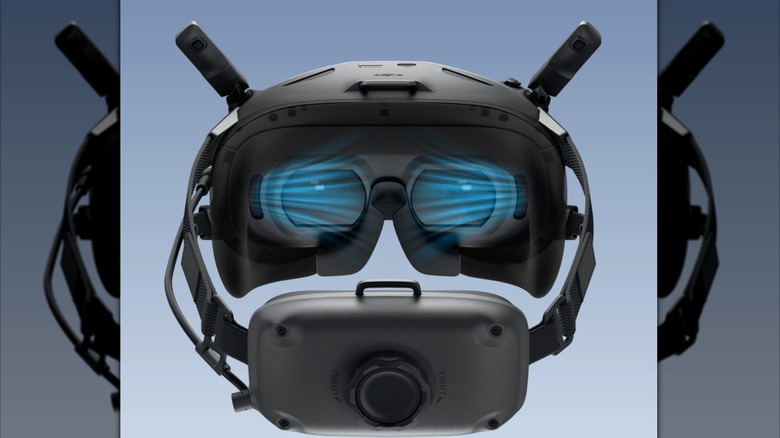5 Cool DJI Goggles N3 Features That Elevate The Drone Experience
We may receive a commission on purchases made from links.
While we're still a few decades away from flying cars, we can still experience the exhilarating feeling of flying through mountain ranges or cities with a drone and a pair of goggles. Previously, several DJI models have joined our list of best photography drones, so it's not surprising that it also offers some impressive goggles, including the DJI Goggles N3. In tandem with either the DJI Neo or the DJI Avata 2, we loved how the N3 is relatively affordable for what it can do.
Retailing for $229, the DJI Goggles N3 will cost you about $30 more than the $199 DJI Neo but around half the price of the DJI Avata 2, which goes for $490. If you don't own any of these drones yet, the most budget-friendly option is the DJI Neo, which we think is the best No-RC starter drone you can get in the market so far. Although it does have a few kinks, like so-so video quality, its travel-friendly size makes it a great companion to use with goggles in your luggage, plus the DJI RC Motion 3, which weighs just under 4.2 oz.
If you're looking to nab a pair of drone goggles for your next holiday, our team at SlashGear gave the DJI Goggles N3 a stellar review in 2024 for several reasons. If you're only halfway convinced, here are some of our favorite DJI Goggles N3 features and what to expect if you ever decide to add it to your cart.
Real-time flight and live view sharing
When it comes to flying drones, a slight latency in transmission can mean a big difference. While you can get away with some delays in wide-open skies, real-time views are crucial if you're flying in tight spaces. This won't be a problem with the DJI Goggles N3 because of its DJI O4 advanced digital video transmission system. Moving between 2.4 GHz and 5.8 GHz bands automatically, the DJI Goggles N3 can work up to 13 kilometers away. With a transmission rate that can go up to 60 Mb/s, you can expect only 31 ms latency and 100 frames per second. Plus, with its 2.7-hour battery life, you don't have to worry about charging its battery as often as you do replacing the one in your drone.
If you want to share your live views with a friend, you can set up a live feed of the DJI Goggles N3 using a smartphone with the DJI Fly app. Unlike the DJI Goggles 3, which has wireless signal sharing, you will need to use a wired USB-C cable to do this on the DJI Goggles N3, but it's a small inconvenience for paying half the price. Alternatively, if there are also other DJI goggles users in your party, it's possible to enable Broadcasting Mode so that other people can tap into the signal and join as audience members. To do this, they will need to select a device number to join the transmission.
High field of view (FOV)
Among all the things that can move the needle for any set of drone goggles, the field of view or FOV is one of the most critical. Now, when it comes to FOV, bigger doesn't necessarily mean better. In general, a large FOV can make it feel more immersive with a wider view. Plus, it has other benefits when you're trying to capture content, like being more efficient. However, one caveat is that it can lead to more edge distortion, which can also affect your viewing experience, as well as introduce safety issues because it affects how you estimate distance or avoid objects. If the edge distortion isn't the best, the effects can range from slightly straining your eyes to accidentally crashing your drone.
When it comes to FOV, DJI shares that the Goggles N3 has a 54-degree field of vision. Among other DJI Goggles, the N3 lags behind some of the more powerful models, like the DJI Goggles Racing Edition (RE), which has an impressive 148-degree FOV. Although, it does have a slightly higher FOV than the Goggles 2 at 51 degrees and the Goggles 3 at 44 degrees. And while it's disappointing that the DJI Goggles N3 might not be as compatible with other drone models in the DJI portfolio, you can rest assured that the two models it is designed to work with would have been tested for the most optimal, stable viewing experience.
Augmented reality and panoramic playback
Similar to older models, the DJI Goggles N3 has augmented reality features wherein you can view both the environment and the screen with your drone settings at the same time. However, for this to work, you'll need to get the DJI RC Motion 3, which also works as an augmented reality cursor. With this, you can make all your quick changes or enable some features without having to take your goggles off. That said, one key difference is that because the N3 uses LCD panels, they'll fall a little short if you're used to the vibrancy of older, more expensive models that have Micro-OLED screens, like the DJI Goggles 3.
If you're keen on reliving your flights long after you've landed, you can also use the N3 to replay videos in a panoramic format. So, if you've captured some unbelievable footage from your last adventure, there's no reason other people should miss out. They can view it exactly the way you did, but just not in real time. For this to work, you can simply plug a micro USB into the port on the top portion of the device and select it from the album. But take note, the Goggles N3 doesn't have speakers built-in on the device itself, so you'll want to get compatible playback devices, like earphones or speakers. Apart from having a built-in digital-to-analog conversion, DJI mentions that it needs to be connected via the USB-C port.
Head Tracking features
To experience optimal maneuverability, the DJI Goggles N3 offers the same Head Tracking technology that was present in its older models since the original DJI Goggles. According to DJI, you can turn this on by selecting the head tracking icon in the menu. Afterward, you'll be able to control both the horizontal orientation and the gimbal tilt with just your head. Although it hasn't reached the level of smoothness wherein it can literally look at where you're looking, it's possible DJI will release more advanced versions in the future. And if you're worried about accidentally crashing your drone, the Head Tracking will also automatically stop working the moment you remove the goggles, so you can relax.
And if you haven't already, don't forget to add the DJI RC Motion 3 to your cart. Apart from the typical ascent, descent, and lateral movements, it has a two-stage accelerator that can let your drone go forward and backward. With your Goggles N3, you can get the thrill of a lifetime with all the flips and drifts you can trigger with just the RC Motion 3's single joystick. Although, if you want to experience some of its more compelling features, like the Power Loop, which is an in-flight 5-meter loop, you'll need to be using the Avata 2. On Amazon, you can get the DJI RC Motion 3, which has an average rating of 4.5 stars from over 190 reviewers, for only $99.
Instant defogging
Anyone who has ever had to wear goggles for long periods, even for things like diving, can tell you that the experience of fogging up can be a nightmare. While you can simply remove the goggles to wipe them out, this can break your momentum and affect your flying experience. While DJI doesn't mention if it is safe to use defogging solutions on the goggle lens in its user manual, it does offer something better: one-touch defogging. If you plan to fly your drone through humid conditions, the DJI N3's one-touch defogging feature can be a lifesaver. With its internal fan, it accelerates the speed of the air, which helps remove the fog. This is also useful for when temperatures drastically change in the middle of your flight. Alternatively, you can use the lens cleaning cloth that comes with the goggles in a circular motion.
On the other hand, there's also that gross feeling that comes with the rubber padding, which can also leave those weird marks on your face. In our review, we've mentioned how the DJI Goggles N3 solves this by introducing a cloth padding, at least near your eyes and nose, where it matters. Not to mention, as confirmed during our testing, it is possible to use it with your own glasses. But as our reviewer noted, it may not work if you have large frames, so you'll either want to get a smaller frame or test it with yours in-store before making the purchase.
